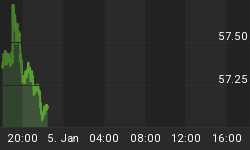
If the economy continues to improve, it is not a question of if, but when the Federal Reserve will begin to raise interest rates. Since markets set asset prices, it is prudent to keep an eye on market expectations relative to the timing of the first rate increase. From The Wall Street Journal:
Futures contracts pegged to the federal funds rate, the rate most directly influenced by the Fed, saw little movement as well. Pricing on those contracts suggests traders see a 50% chance the Fed will tighten by next June, down from 60% in March. John Briggs, head of cross-asset strategy at RBS Americas, said Ms. Yellen's remarks suggests the Fed is still on track to raise rates in the middle of 2015, "but the pace is going to be slow." That, he says, will give continued support to stocks, which have rebounded repeatedly after modest pullbacks. "It's the reason that dip in the stock market is only 3% or 5% and not 10%," said Mr. Briggs.
Obviously, market expectations can shift, but given what we know today, the odds of a rate hike catching the markets by surprise seem relatively low.
The Big Picture
Regular readers know we have been adding to our equity positions based on recent improvements in the market's tolerance for risk. Several examples of observable shifts are covered in this week's stock market video.
Yellen Holding Cards Close To Vest
Jackson Hole was expected to provide some insight into which way Janet Yellen is leaning. The central bank conference may have provided more uncertainty, rather than clarity. From The Wall Street Journal:
Encouraged by progress in the U.S. labor market, but uncertain if it is enough, the Federal Reserve Board chairwoman and other officials who gathered here for a central-bank conference left the public guessing about when they will start raising short-term interest rates... The discussion of wages in Jackson Hole was emblematic of the broader job-market puzzles Ms. Yellen is trying to solve. "The low rate of wage growth is, to me, another sign that the Fed's job is not yet done," Ms. Yellen said back in March. In Jackson Hole she had caveats.
Investment Implications - The Weight Of The Evidence
With the S&P 500 crossing 2000 during Monday's session, it is difficult to place a high probability on any surprises from the Fed in the short-term. The next formal policy statement comes on September 17, meaning the market may focus on other issues for a time.
Should we be concerned about interest rates? Yes, but as noted using recent underperformance of small caps, it is the weight of the evidence that ultimately determines the market's path. Our market model called for another incremental add to the growth portion of our portfolios Monday. Until the evidence shifts, we will continue to maintain exposure to U.S. stocks (SPY), and leading sectors, such as healthcare (XLV). Tuesday brings a report on durable goods and the latest read on consumer confidence. The market will take a breather at some point. When it does, we can use points A, B, C, and D below as risk-management guideposts.

In the chart above, point A comes in near 1984 on the S&P 500, point B near 1961, point C near 1941, and point D near 1920.
















